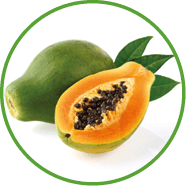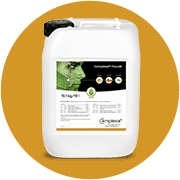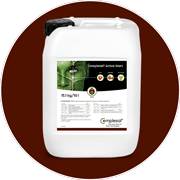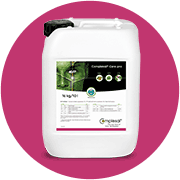
Papaya
Papaya is a tropical fruit having commercial importance because of its high nutritive and medicinal value. The plants need high amounts of fertilizers with the right nutrient composition to grow well under tropical conditions. Leaking nutrients can be applied efficiently via the leaf. As quality parameters are considered to be high because of commercial sale, nutrients like Potassium, Calcium and Boron are among the most important nutrients to determine and produce a high-quality fruit resulting in high crop prices.
Key nutrients:
The requirement of Potassium is the largest. Papaya takes up K continuously throughout the entire plant cycle. It is especially important after the fertilization of the flowers to produce larger, better quality fruit, with elevated levels of sugars and total soluble solids. Potassium deficiency appears first in the oldest leaves and under severe deficiency the leaves are shed. The oldest leaves may also become yellow between the veins and along the edges with necrosis. The leaves tend to dry from the tip to the center. The developing leaves show chlorotic edges with small necrotic spots.
Calcium is important for fruit firmness, shelf life and internal quality. Calcium is the building block of plant cells. It strengthens cell walls, it is essential in all new growing points of papayas including roots and root hairs, leaves, flowers and pollen tubes and it keeps the cell walls elastic and allows the cells to expand as they grow. Deficiency can cause chlorosis of mature leaves which have curled edges, harming leaf development with small necrotic spots. Also, the leaves are twisted and have folded stems. Economically it is important as it has influence on premature ripening of fruits leading to loss of fruits and softening of the fruit pulp, which leads to quality issues during transport and also shorter shelf life.
Besides Calcium, Boron is most efficiently applied via foliage. It affects the movement of plant hormones and sugars. Moreover, fruit set is increased as it helps with pollen viability and pollen tube growth. Additionally, it is a key component of cell walls and helps Calcium move to the cell walls. Mostly Boron deficiency is seen on fruits with completely deformed fruits with tumor like appearance. When the deficiency is severe, the growing points of both stems and roots are affected, the fruits are poorly formed and latex drains from distinct points on the skin because of leakage of Potassium from cell membranes. Once a plant shows signs of deficiency it cannot fully recover.
Product recommendation papaya

Contact us for more information
Whether you’re interested in more information or just have some questions, we’re here to help. Our experts will be pleased to share their knowledge with you and take care of your request.


